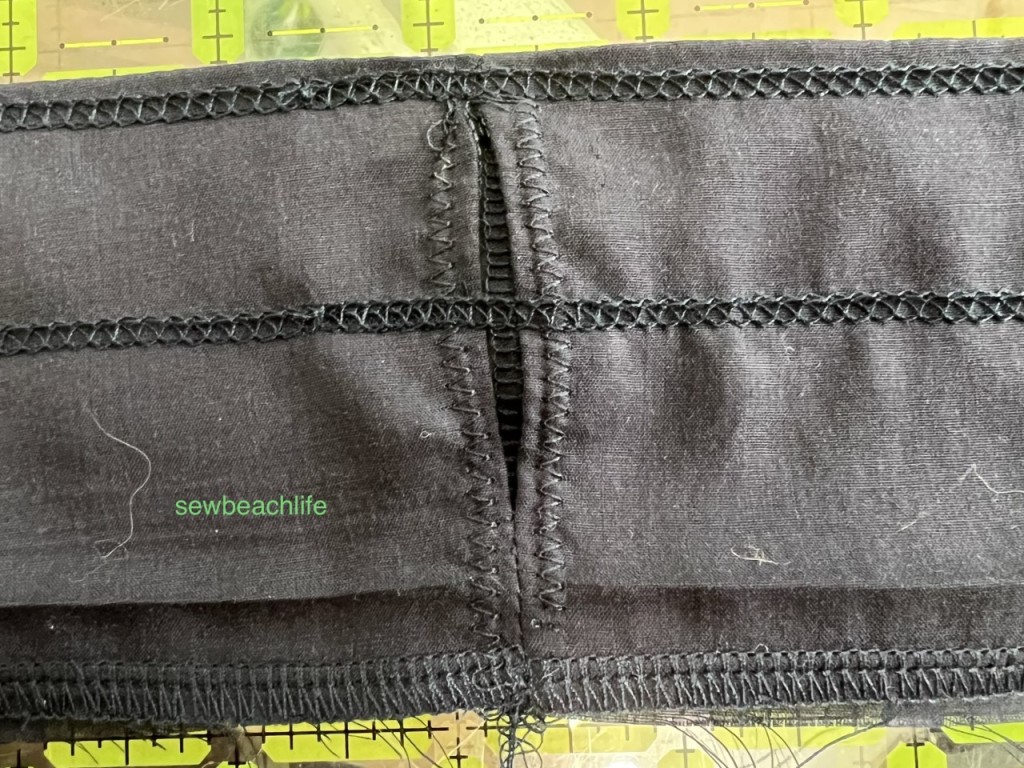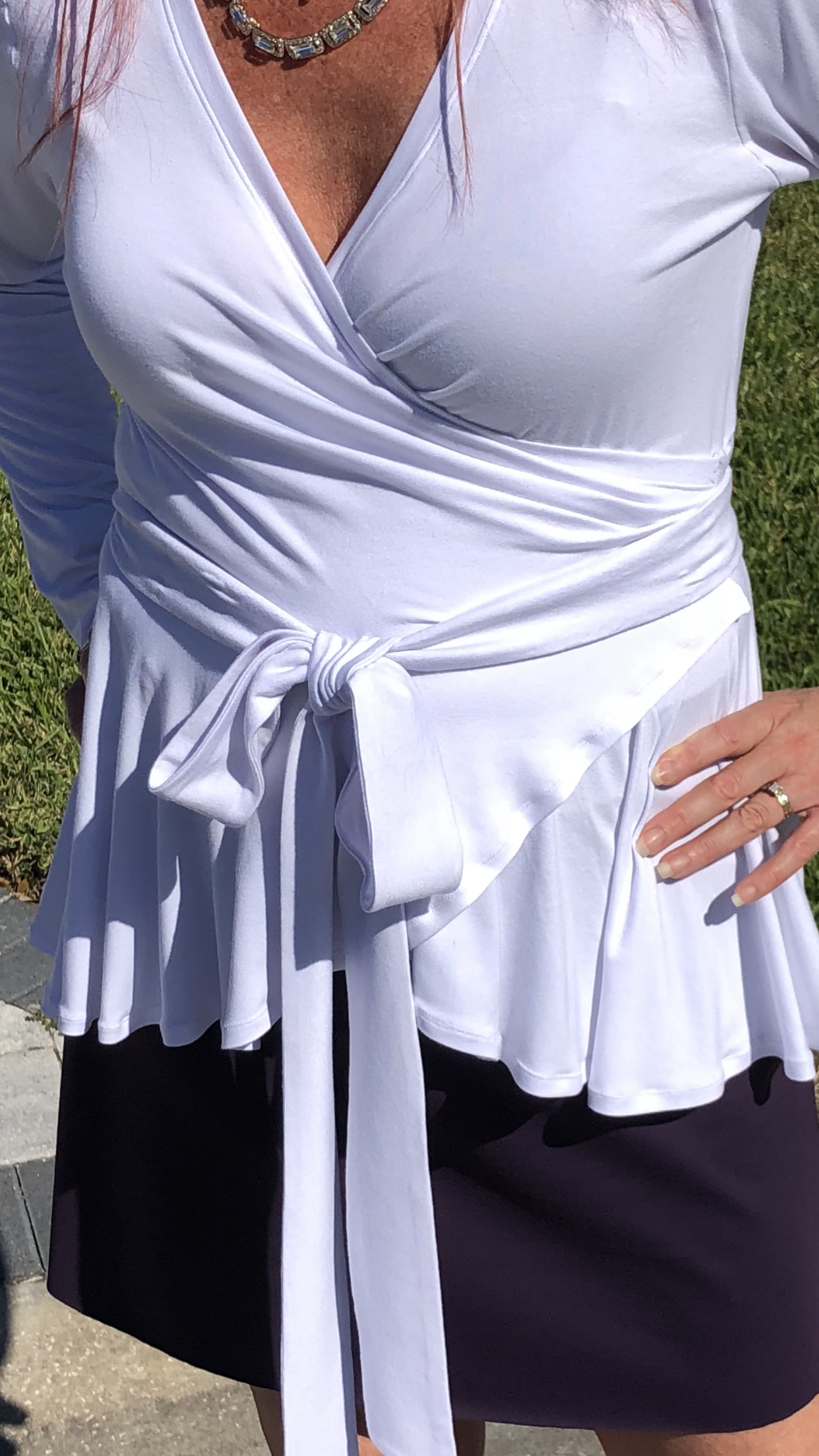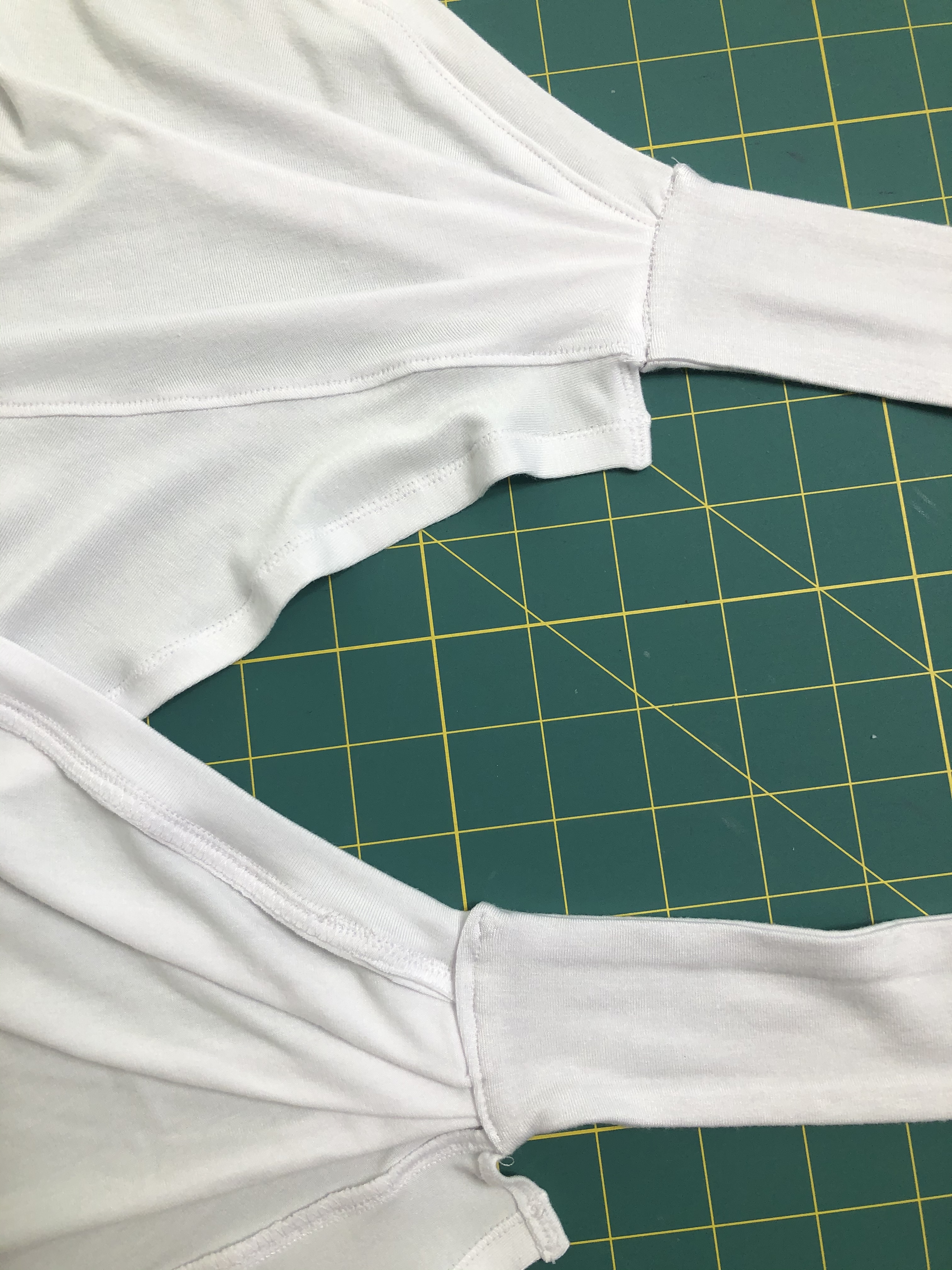A fitted strappy top or crop (with an optional shelf bra!) is the perfect complement to a light breezy skirt. I love it when Stitch Upon A Time brings an on-trend look to life!
About a month ago, I was sitting at the beach with family and friends and noticed the skirt a woman walking by was wearing. I know people watching is a common “sport”, but garment sewists, we tend to clothing watch. 🙂 Whenever I see a cute dress, top, skirt, or outfit, I start thinking: do I have a pattern for that? Anyways, the maxi length skirt she was wearing was made of a white gauzy fabric, had overlapping sides, and an elasticated waistband. It looked so cute, but I had never seen a pattern like it. About a week later, the testing call for the Cinder Skirt popped up and I was so excited to sign up for it! The Sage Top was also being tested, and I couldn’t resist the opportunity for a cute new summer outfit.

The design of the Cinder Skirt is perfect, with beautiful, clean finishes. There are no exposed raw edges, all the seams are enclosed. With quality finishes like this, no matter how many times you wash and wear this woven skirt, it won’t fray. The secret to the hem on the curved sides is the facing. My best tip for the facing is to serge along the inner curve with a four thread overlock, then press that inner curve to the wrong side of the fabric. This will make it easier to press, and keep your fabric from fraying inside the hem, even when using fabric that tends to fray a lot, like linen.

When serging the facing to the skirt panel, up the differential to 1.3 or even 1.5 when serging the outer curves. This will help the curved seam lay flat when the facing is flipped to the inside and pressed. Just don’t forget to put it back on N for the straight sections!

The waistband calls for either two rows of 1″ elastic, or one row of 2″ elastic, stitched in the middle. The directions call for top-stitching the upper edge of the waistband, inserting the elastic, then top-stitching below the elastic, and inserting the second row of elastic. I followed the rules on my first test version, but decided to try using my coverstitch and a different method on my second skirt.
I thought it might be easier to leave an opening for elastic, stitch the waistband, then insert the two pieces of elastic. To prepare the waistband for this, I serged along both short ends to finish them. Then I sewed the short ends together 1/4″ past the halfway fold of the waistband. I stitched the bottom 1/2″ of the short ends together too. This left me an opening for the elastic on the inside of the waistband. I pressed the seam open and stitched along the opening to finish it.

Since even a narrow coverstitch is wider than a single row of top stitching, I had to make small changes. Rather than top-stitching 1/2″ from the upper edge of the (folded in half) waistband, I coverstitched 1/4″ from the upper edge. Leaving 1″ of room for the 1″ wide elastic, I ran the next row of coverstitching. As per the pattern tutorial, the raw edge of the waistband was serged onto the gathered skirt. The pre-pressed bottom of the waistband was folded over the serged waist seam, carefully pinned in place, then coverstitched.

I love the beautiful clean finish on the waistband, and the professional look of coverstitching. I will admit though, that it took a bit of work to get both pieces of 1″ elastic threaded evenly through the waistband with this lightweight fabric! It’s such a fun skirt though! And I love that there are three length options- mini (which is what I made), knee, and maxi length. I still need to find some white gauzy fabric to duplicate the maxi skirt that I saw at the beach!

The Sage Top is such a great companion to the Cinder Skirt! Being a fitted tank, it skims the body and works well with the gathered skirt. I love that it has a built-in shelf bra so that I don’t have to wear an uncomfortable strapless bra.

The Sage Top with shelf bra is not designed to wear as workout top (unless of course your bust doesn’t really need support for exercise). But for casual wear, it provides adequate support to wear comfortably. Because I have a larger cup size, and have a “grandma” bust, I always use powernet in every bra/shelf bra/swimwear/workout top I make.
The main fabric I used is a lighter weight nylon/spandex circular knit. It is super soft and comfortable, but doesn’t have as much recovery as say an athletic or swim knit. So I used a nylon/spandex swim fabric, and a layer of powernet for the shelf bra. And, I snuck some clear elastic in on the strap section of my binding.

This photo makes it obvious that I didn’t follow the pattern tutorial and do a double folded binding. When doing binding on a knit garment, I just find it easier to use 1/4″ seam allowances, and use the faux binding method. Should I be advising people to not follow the tutorial and go rogue? Possibly not, but it’s what works best for me, and gives such beautiful results that I’m unlikely to change my faux binding habit! 🙂 To accommodate the method, I cut the binding strips at 1-1/4″ wide, instead of the called for 2″. (1/4″ seam allowance + 1/2″ wide binding + 1/2″ folded under).
To prep my binding strips, I serge along one long edge of the binding, using a four thread overlock with a stitch width of M, and a stitch length of 2, upping my differential to 1.3 to add stability to the straps. Then I serge the binding to the garment right sides together, and press the binding up. Then I fold the binding around to the back until the raw serged edge aligns to cover the seam. Use plenty of pins to keep the binding in place, and coverstitch.

The design of the Sage Top and Crop is so elegantly simple- a seam up the center back, and binding. Easy breezy! Center back seams are great for shaping. In for the waist, and curving out to fit smoothly over the bum.

I’ll wear my Sage Tops with shorts to go skating. It’ll be nice to not have to wear a bra on hot, muggy Florida days. Since we’re busy working on a home updating project, I haven’t had time to skate in weeks. It’s killing me to miss out on my normal Wednesday morning skate around the neighborhood, but such is the life of avid DIYers! It’s also taken away pretty much all of my sewing time, which is why I don’t have any more of these outfits made yet.

So, I’ll have to content myself with this cute outfit until I get some more sewing time! I’d also like to hack the Sage Top, by cutting the crop length, and adding either the Max Top and Dress skirt, or the Wylde Dress skirt. Ah, so many possibilities!
The details:
The Sage Top and Cinder Skirt are new patterns from Stitch Upon A Time.
I used nylon/spandex circular knit, nylon/spandex tricot swim knit, and powernet from Phee Fabrics for the Sage Top.
The 1″ wide knit elastic for the shelf bra in the top and the waistband of the skirt was purchased at Wawak, along with the MaxiLock serger thread used for construction.
The navy lyocell twill fabric for the skirt was a surprise clearance section find at JoAnn Fabrics. I would definitely buy it again, as it was the perfect weight and drape for this skirt.
Thank you for reading and sharing my love of creating, sewing, patterns, patterns, fabric, and making beautiful, well-fitting garments! ❤
The links to Stitch Upon A Time may be affiliate links, which means that at no extra cost to you, I may receive a few pennies if you purchase through my link. As always, I only give my honest opinion. After all, it is my blog, which represents me!





















